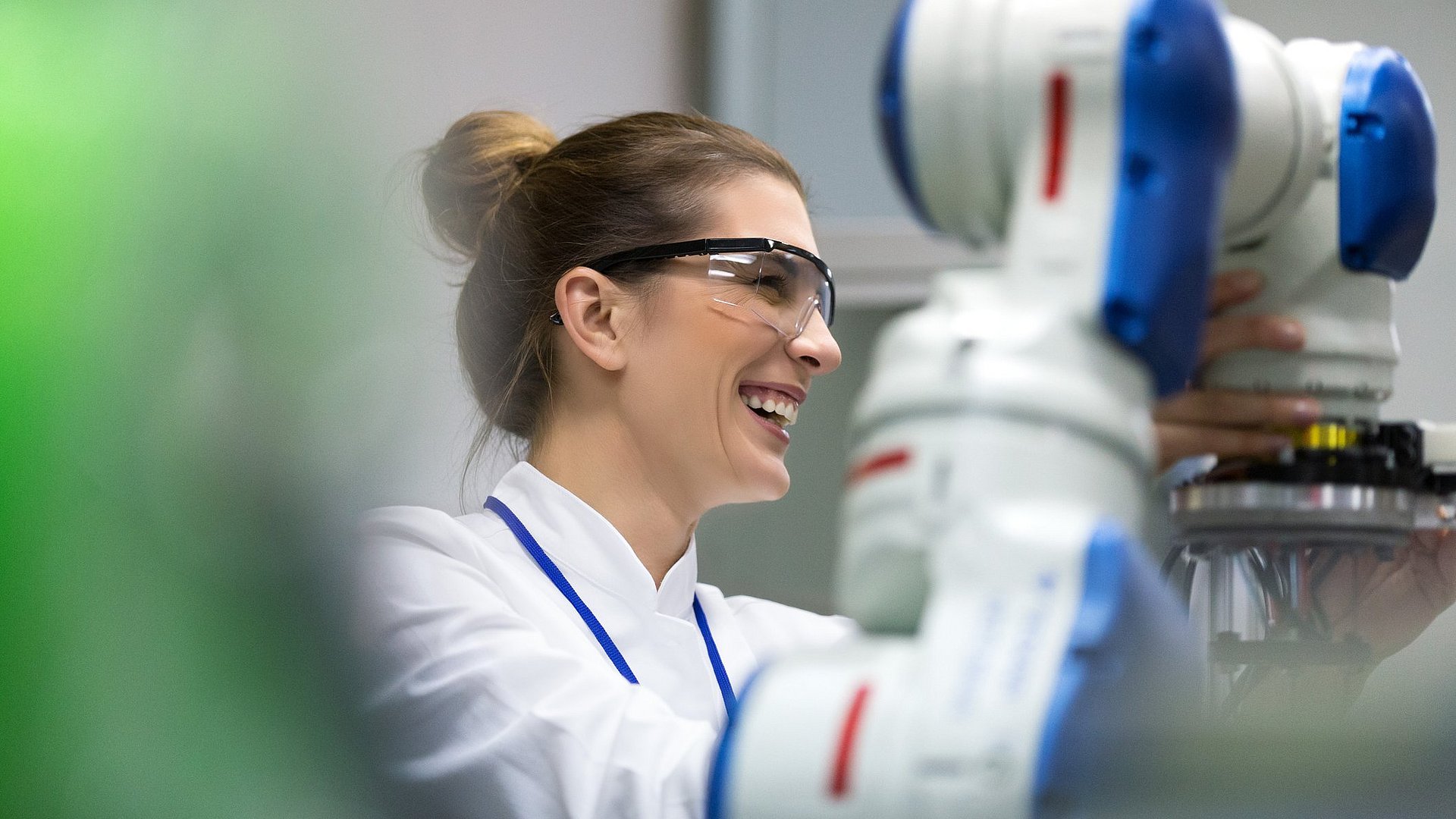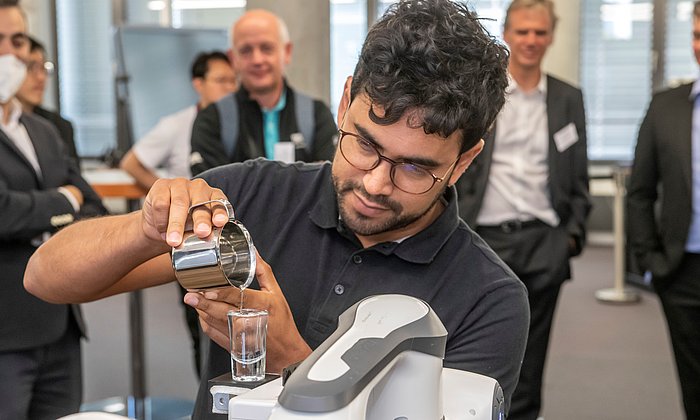51 million euros for TUM Center for Embodied Laboratory Intelligence
First AI experimentation space for automatic knowledge generation

There is now little if any automation in experimental research processes. Researchers spend one third of their time actually performing their experiments in the lab. “The goal in TUM ELI will be to automate the design and execution of experiments,” explains Prof. Eckehard Steinbach, one of the co-developers of the concept: “An ‘ELI-AI’ system will communicate with the researcher, come up with experiments and suggest ways of continuing or modifying them,” says the Director Start-ups & Infrastructure at the Munich Institute of Robotics and Machine Intelligence (MIRMI) and head of the Chair of Media Technology at TUM. “The use of artificial intelligence harbors the potential for new solutions such as DNA-based structures to transport drugs within the body,” believes MIRMI Executive Director Prof. Sami Haddadin: “TUM ELI is designed to embody a robot-based lab-as-a-service concept and also to generate new knowledge through AI.” This will require the development of new structures and mechanisms.
TUM ELI: Focus on the nano/micro world
The fundamental idea behind TUM ELI is to make the smallest robotic structures both the subject of research and part of the solution. TUM professor Steinbach asserts confidently: “We are moving into exciting dimensions that involve challenges never seen before.” Existing processes and technologies for communications or information processing in the macro world cannot be transferred to the nano/micro world, for example. This calls for entirely new solutions. The concept encompasses research initiatives extending from “intelligently networked assistants” and “cooperative fabrication of nano and micro machines” to “holistic communications and information processing”.
From micromachines and nano printers to scanning electron microscopes
Technologies developed at TUM ELI will include micromachines that can move around inside a person, perhaps to collect and analyze tissue particles. The facility will contain advanced laboratory equipment such as a scanning electron microscope and a nano printer capable of being used by macro robots. “In that regard, we are thinking primarily of mobile platforms or cobots that will perform tasks for researchers, such as positioning samples to be studied under the microscope,” explains Steinbach.
At present MIRMI lacks the rooms and equipment for the automatic generation of knowledge in laboratory sciences. With TUM ELI, TUM is now creating this experimental space. It is also designed to serve as a shared facility and will become a center for leading edge research for scientists from around the world in the future.
TUM ELI will promote cross-location collaboration among top international researchers in robotics and machine learning (Prof. Sami Haddadin, Prof. Angela Schoellig), communications and computing (Prof. Holger Boche, Prof. Wolfgang Kellerer), perception and human-robot interactions (Prof. Sandra Hirche, Prof. Eckehard Steinbach) and nano/micro machines (Prof. Berna Özkale Edelmann, Prof. Hendrik Dietz, Prof. Friedrich Simmel).
Compact information on the robotics and ai institute Munich Institute of Robotics and Machine Intelligence (MIRMI)
Technical University of Munich
Corporate Communications Center
- Andreas Schmitz
- presse@tum.de
- Teamwebsite
Contacts to this article:
Professor Eckehard Steinbach
Lehrstuhl für Medientechnik
Director Start-ups & Infrastructure am Munich Institute of Robotics and Machine Intelligence (MIRMI)
Technische Universität München (TUM)


